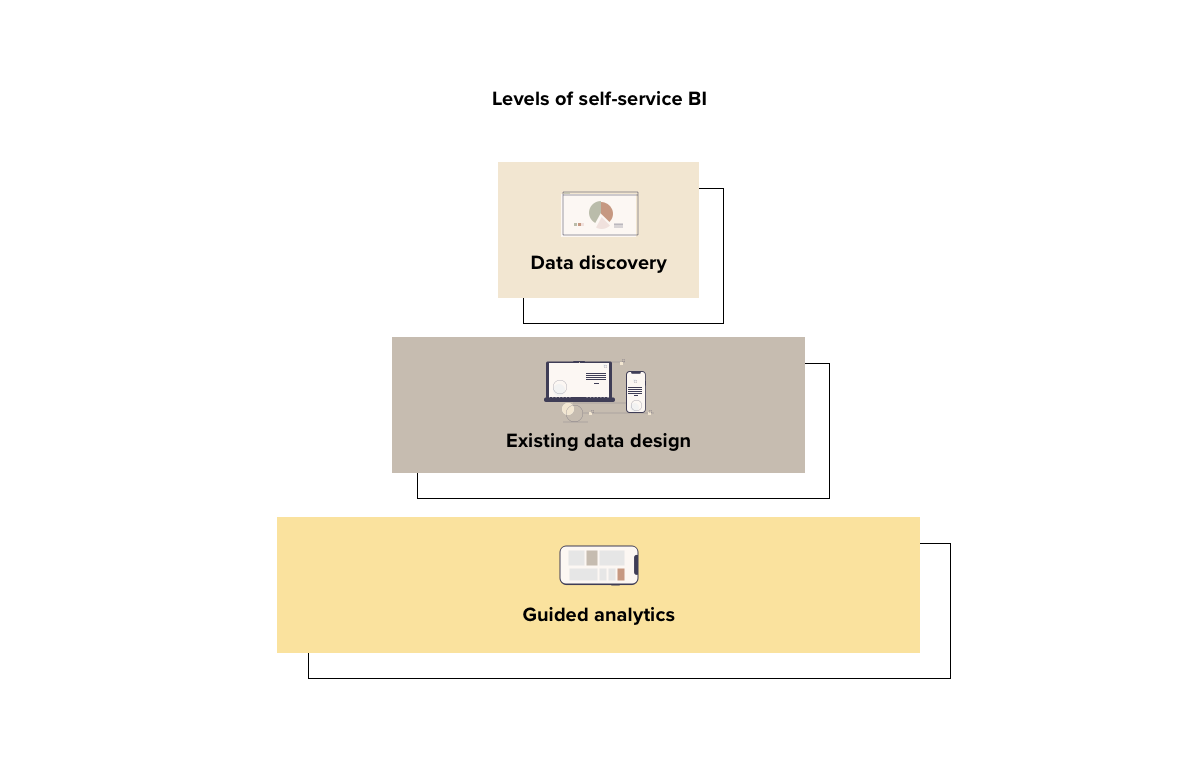- blog
- What is self service BI? TARGIT
What Is Self-service BI?

In the business intelligence (BI) industry, many buyers associate the term "self-service BI" with user-friendliness. However, that isn’t always the case. In fact, the tools that BI vendors often tout as self-service are, in reality, not even approachable for the average, non-technical employee.
What Is Self-Service Business Intelligence?
Self-service BI, defined broadly, means business intelligence users have the ability to support their own needs for insight and experimentation without involvement from IT or a product specialist every time they’d like to bring in a new data source or create a new analysis. But self-service is an elastic term. What is considered self-service for some is certainly not self-service for all.
A true self-service BI solution focuses on both centralized and de-centralized BI. In other words, self-service is a part of the full BI lifecycle of insight discovery, insight testing, and execution.
When searching for a business intelligence platform with self-service capabilities worth their salt, it’s important to determine specifically who should be able to take advantage of any self-service capabilities and in which ways. That’s why categorizing your BI user personas is an important step that must be taken before implementing BI.
Typically, there are three levels of self-service capabilities that a BI solution worthy of the words should offer. Each level, while self-service by definition, is only that for a particular type of BI user with a particular set of BI skills. These levels begin with the broadest amount of users and end in a realm that’s exclusive to highly technical employees within the company.
Three Types of Self-Service BI
1. Guided Analytics
Guided analytics includes pre-built dashboards and analyses that clearly guide users — regardless of technical expertise — and make it possible to drill down into the numbers for more details. Users of guided analytics get the answers they need to support daily business and feel empowered with the insight most relevant to them.
2. Existing Data Design
This level of self-service BI provides users with the ability to create new content for their own consumption and to share with others. These abilities include designing new reports and analyses, setting notifications, scheduling reports, and more. It is important to note that all new content created is based on data models already available within the BI environment.
3. Data Discovery
Self-service data discovery allows users to integrate new data sources and mash up those data sources when data is within the existing BI environment. The process of data discovery fully embraces experimentation with new data and hypotheses.
Users of self-service data discovery are skilled at thinking outside the BI box. They use data discovery tools to test their own hypothesis on the reasons behind company results, such as combining internal revenue data with industry revenue data to see if they’re gaining market. Or using weather and traffic data to see potential correlations with business performance. Or even examining population density in certain areas to select locations for new retail outlets.
The beauty of external data discovery is that it’s just about as endless as the user’s imagination.
If and when the data is determined to be a valuable performance indicator, it can then be published for use across the entire department, allowing everyone to gain the advantage of insight. This execution of the tested data keeps the BI lifecycle spinning.
Suffice it to say that this level of self-service BI is not one that even non-technical users can easily wrap their arms around. This is an environment for Business Analysts, Data Scientists, and Citizen Data Scientists.

Find the Right Self-Service Capabilities for Your Company
Our advice to BI managers is to find a business intelligence platform that meets your specific needs. Be sure to enter the conversations with a clear idea of who will be using BI, their technical competencies, and their goals with the software and data-driven environment the company strives to cultivate. Dig deeper anytime a tool is described as self-service.
When rolling BI out in your company, be sure to provide the proper training for everyone, not just the technical wizzes who will be getting their hands dirty with BI every day. And when presenting employees with a self-service BI tool, be sure to walk them through the actual clients, features, and functions that will most appeal to their informational needs and skill sets. This is the key to happy BI users and wide BI adoption.




